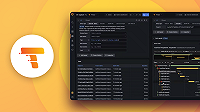This is documentation for the next version of Tempo. For the latest stable release, go to the latest version.
Metrics-generator
Metrics-generator is an optional Tempo component that derives metrics from ingested traces. If present, the distributor will write received spans to both the ingester and the metrics-generator. The metrics-generator processes spans and writes metrics to a Prometheus data source using the Prometheus remote write protocol.
Note
Enabling metrics generation and remote writing them to Grafana Cloud Metrics produces extra active series that could impact your billing. For more information on billing, refer to Billing and usage.
Overview
Metrics-generator leverages the data available in the ingest path in Tempo to provide additional value by generating metrics from traces.
The metrics-generator internally runs a set of processors. Each processor ingests spans and produces metrics. Every processor derives different metrics. Currently, the following processors are available:
- Service graphs
- Span metrics
- Local blocks

Service graphs
Service graphs are the representations of the relationships between services within a distributed system.
This service graphs processor builds a map of services by analyzing traces, with the objective to find edges. Edges are spans with a parent-child relationship, that represent a jump (e.g. a request) between two services. The amount of request and their duration are recorded as metrics, which are used to represent the graph.
To learn more about this processor, read the documentation.
Span metrics
The span metrics processor derives RED (Request, Error and Duration) metrics from spans.
The span metrics processor will compute the total count and the duration of spans for every unique combination of dimensions. Dimensions can be the service name, the operation, the span kind, the status code and any tag or attribute present in the span. The more dimensions are enabled, the higher the cardinality of the generated metrics.
To learn more about this processor, read the documentation.
Local blocks
The local blocks processor stores spans for a set period of time and enables more complex APIs to perform calculations on the data. The processor must be enabled for certain metrics APIs to function.
Remote writing metrics
The metrics-generator runs a Prometheus Agent that periodically sends metrics to a remote_write endpoint.
The remote_write endpoint is configurable and can be any Prometheus-compatible endpoint.
To learn more about the endpoint configuration, refer to the Metrics-generator section of the Tempo Configuration documentation.
Writing interval can be controlled via metrics_generator.registry.collection_interval.
When multi-tenancy is enabled, the metrics-generator forwards the X-Scope-OrgID header of the original request to the remote_write endpoint. This feature can be disabled by setting remote_write_add_org_id_header to false.
Was this page helpful?
Related resources from Grafana Labs



